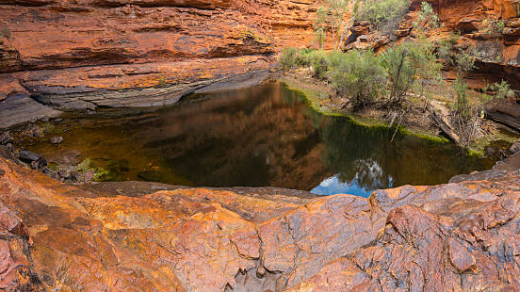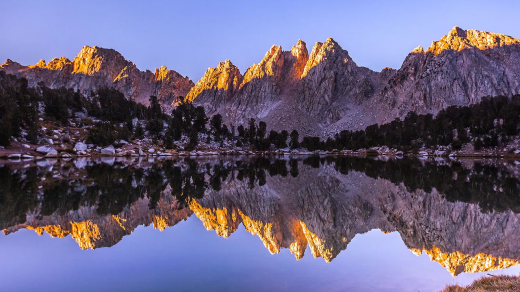The monolithic rock formation known as Uluru, rising dramatically from the Central Australian desert, is not just a spectacular natural landmark. It’s a deeply sacred site for the Indigenous Anangu people and a symbol of Australia’s unique natural heritage. This majestic red rock is a place of profound spiritual and cultural significance, as well as stunning biodiversity. Its status as a UNESCO World Heritage Site underlines its importance to humanity at large. In this article, we delve into what makes Uluru so significant and how visitors, perhaps on a 2 day Uluru tour, can experience this marvel while respecting its cultural and environmental significance.
The Spiritual and Cultural Importance of Uluru

For the Anangu, the traditional owners of the land, Uluru is a sacred site where the world was shaped by their ancestors’ deeds during the creation period known as Tjukurpa. It’s a living, breathing landscape where every crevice, cave, and crease has a story and significance. The rock hosts a multitude of ancestral spirits and is a repository for a vast array of Indigenous knowledge and tradition. Visitors are encouraged to learn these stories and understand the cultural tapestry woven by generations of Anangu through traditional lore and customs.
The narratives associated with Uluru include the story of the Mala (rufous hare-wallaby) people and their epic battle against the poisonous snake Liru, painting a vivid tableau of good versus evil onto the rock’s façade. Each tour and interpretive sign around the site shares fragments of this living cultural library, guiding visitors through the Dreamtime and connecting them to an ancient past.
Uluru’s Natural Splendor and Biodiversity
Uluru is not just an icon of cultural heritage; it’s also a natural wonder. This imposing sandstone monolith rises 348 meters from the surrounding plain, with a circumference of 9.4 kilometers. The rock’s iron content accounts for its striking red hue that shifts captivatingingly at dawn and dusk. What’s less visible is the extensive network of caves, waterholes, and ancient rock paintings that dot its surface, making each visit a discovery.
The ecosystems that envelop Uluru are just as impressive. The harsh desert environment teems with life, hosting an array of adaptive plants and animals. Some key species include the thorny devil lizard, the majestic wedge-tailed eagle, and a variety of rare plants like the Uluru grevillea.
Here’s a glance at the unique species found around Uluru:
| # | Species | Significance |
|---|---|---|
| 1. | Thorny Devil Lizard | An expert in desert survival. |
| 2. | Wedge-Tailed Eagle | Australia’s largest bird of prey. |
| 3. | Uluru Grevillea | A plant species endemic to the region. |
Uluru in Australian History and Society
The significance of Uluru in Australian history cannot be overstated. When settlers first arrived, the lack of understanding and respect for Indigenous culture led to a contentious relationship with the traditional custodians of the land. Over time, however, the iconic status of Uluru has become a focal point for discussions of reconciliation, rights, and the recognition of Indigenous Australians in the fabric of national identity.
The growth of tourism at Uluru has had both positive and negative impacts on the region. While it has brought economic benefits and greater cultural awareness, the influx of visitors has also placed a strain on the delicate desert environment and raised questions about the respectful treatment of sacred sites.
Recent developments have seen major steps forward in the management of Uluru, particularly the ban on climbing the rock, which came into effect in 2019. The decision was a significant victory for Anangu people, reflecting growing acknowledgment of Aboriginal law and cultural rights in Australia.
The Importance of Uluru in Aboriginal Law and Tjukurpa
Tjukurpa is the foundation of Anangu life and law. It encompasses the creation stories, the moral code, and the social behavior that guides daily life. For the Anangu, Tjukurpa explains the relationship between people, plants, animals, and the physical features of the Earth.
Within this framework, Uluru holds a place of paramount importance. The rock formations, springs, caves, and ancient paintings all relate to Tjukurpa, signifying the interconnectedness of all life and laying out the law for its protection and perpetuation.
Uluru’s Global Significance as a UNESCO World Heritage Site
Having gained the prestigious title of UNESCO World Heritage Site, Uluru is recognized for its exceptional universal value to humanity. UNESCO designated Uluru as a dual-listed site for both its cultural and natural properties, highlighting its global importance beyond Australian shores.
Visiting Uluru: Respectful Tourism and Cultural Sensitivity
The experience of visiting Uluru is unlike any other. But with that privilege comes the responsibility to conduct oneself with the greatest respect for this ancient place. Here are some guidelines that responsible tourists should adhere to:
- Walk only on designated pathways to preserve the delicate desert environment.
- Respect the Anangu’s request not to photograph certain sensitive sites within Uluru.
- Participate in educational tours that focus on the rich cultural history and significance of the site.
If you’re planning a visit, consider booking a 2 day Uluru tour that offers a comprehensive exploration of the area and adheres to stringent ethical guidelines. This not only ensures that you’ll have a rich and informed experience but also supports the sustainable tourism that protects Uluru for future generations.
Conclusion
Uluru is more than a mere geological formation; it is a profound cultural icon and an environmental treasure. Standing at the nexus of ancient tradition and contemporary conservation efforts, it symbolizes the enduring significance of cultural narratives and natural wonders in our world. For those lucky enough to visit on a 2 day Uluru tour or longer, the experience is sure to leave an indelible impact, fostering both respect for our shared heritage and the desire to protect this incredible landmark for the millennia to come.
FAQs About Visiting Uluru
Q1: Why is Uluru considered a sacred site?
A1: Uluru holds deep spiritual significance for the Anangu people, who view it as a central part of their creation stories and beliefs. The rock is imbued with ancestral presence, making it a vital cultural landscape.
Q2: Can visitors still climb Uluru?
A2: No, climbing Uluru has been prohibited since October 2019 to respect Indigenous cultural beliefs and preserve the natural environment from the damage caused by climbing.
Q3: Why is Uluru a UNESCO World Heritage Site?
A3: Uluru is recognized by UNESCO for both its stunning natural formations and its cultural importance as a key part of the Anangu people’s heritage.
Q4: How can I visit Uluru responsibly?
A4: To visit Uluru responsibly, follow park guidelines, stick to designated paths, respect cultural sensitivities, and consider tours that emphasize the cultural and environmental importance of the site.
Q5: What is the best time of year to visit Uluru?
A5: The best time to visit is during the cooler months from May to September when temperatures are more pleasant, allowing for comfortable exploration and deeper engagement with the area’s natural and cultural experiences.



